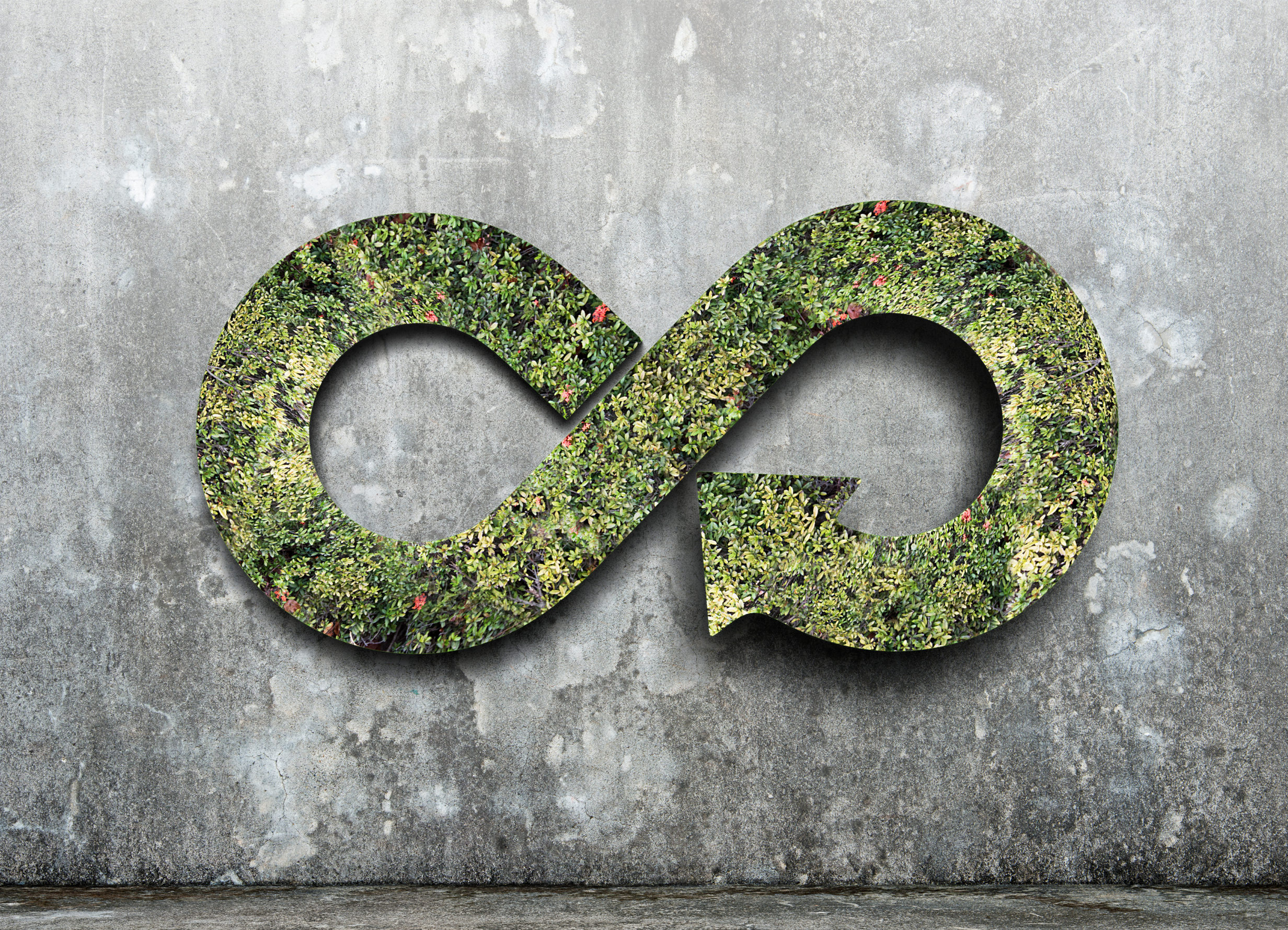Progress towards increasing the circularity of aluminium
As the Circular Economy Innovation Network comes to a close, our industry expert Christopher Pilgram, Knowledge Transfer Manager for Materials, assesses activities in the aluminium community.
The Innovate UK Circular Economy Innovation Network launched in 2022 with the aim to build collaborative communities and inspire circular innovation and adoption. Through extensive consultation with the aluminium sector, we formed an aluminium community and developed an innovation action plan. The aim of the action plan is to outline the key interventions to accelerate the adoption of circular economy principles in the aluminium sector. It’s clear that the transition to a circular economy will take time but there is an urgency to reap the economic benefits and minimise further environmental impact. So, what progress has been made by the sector recently on this path?
Why aluminium?
Aluminium is the second most-used metal in the world by mass and it plays an increasingly important role in today’s society. Due to its unique properties, it is used in a wide range of applications and is integral to the transition to a net zero economy. For example, in the transition to electric vehicles, aluminium is being used to reduce the weight of vehicles to compensate for the added weight of batteries. It also makes up a significant proportion of the mass of battery packs. As such, forecasts suggest demand for aluminium will grow drastically in the coming decades. It is likely that production of primary aluminium will be required to meet this demand, but it presents an important opportunity to encourage the adoption of the circular economy. In other words, as the material is leaking out of the system, do we focus on putting more material in or stopping the leaks? The latter seems more sensible but there is more justification than that.
Circular economy principles re-evaluate the demand for material and ensure maximum value can be extracted. There are three key reasons to increase the circularity of aluminium:
- Reducing environmental impact:
It is well documented that the environment impact of aluminium is driven by primary production. This is clearly visualised using International Aluminium’s Statistics webpage, which shows that 96% of the Greenhouse Gas Emissions for the sector are related to the processes needed to extract and refine aluminium from the ore. There are new technologies being developed and deployed which address this, including inert anode technology. However, it takes an average of 4-5 tonnes of the clay rock to produce 1 tonne of aluminium and many other environmental impacts to consider in primary production. Reducing primary demand by reusing the material already available will minimise these environmental impacts.
- Supply chain resilience:
China produces approximately 60% of global primary aluminium. In a changing geopolitical landscape, there is increasing volatility in the supply of materials. Adopting circular economy principles facilitates local supply networks and relieves pressure on finite, constrained resources.
- Economic opportunity:
The recycling of aluminium is well established across multiple countries, including in the UK. While recycling rates of aluminium are favourable compared to other materials, it is often downcycled in lower value applications due to contamination. In the UK, there is currently a limited capacity for reprocessing, meaning that overall, the UK imports aluminium at almost 50% higher value than it exports. The national economy is therefore not benefiting from the opportunity. Furthermore, there is greater economic opportunity from adopting tighter circular loops. For example, according to the Driving Ambitions report from the World Economic Forum, the circular economy approach enables automotive companies to increase revenues per vehicle by 15-20 times the sales price and significantly improve profitability by maximising lifetime performance.
Policy updates
Due to these reasons, momentum is building towards increasing circularity, perhaps accelerated by policy and regulation. In the two years since the launch of the Circular Economy Innovation Network, there has been movement in several policy areas which provide added justification behind the three reasons listed above.
It was announced in December 2023, that the government will implement a UK Carbon Border Adjustment Mechanism (CBAM) by 2027. The UK CBAM will place a carbon price on industrial goods imported to the UK, including aluminium. While further detail will be subject to consultation in 2024, the intention is to avoid the movement of production and associated emissions from one country to another due to different levels of decarbonisation effort. It is likely this will add a tariff to more carbon intensive imports to incentivise procurement of material from lower carbon production sources. The mechanism presents an opportunity to UK production, which is lower carbon compared to the global average. It can encourage the UK to develop production based on circular principles to demonstrate best practice and capitalise on carbon pricing mechanisms.
At a similar time, the EU introduced Digital Product Passport (DPP), which is expected to come into effect from 2026. This new legislation will set new standards for how product information is shared among businesses, their consumers and authorities. The proposed DPP will capture and share product data across the supply chain including information about the consistent materials, their source and how to repair or recycle the product. The intention to create transparency and support sustainability and the circular economy. Therefore, producers will need to share more information about their products and processes, and those adopting more sustainable practices will stand to gain an advantage. Material passports are being developed which will help address the collection of this data. A coordinated approach is needed to ensure an effective and efficient adoption and gain greatest benefit.
In the automotive industry, the EU proposed a new regulation in July 2023 on end-of-life vehicles following a review. This proposal includes new rules to cover all aspects of a vehicle and includes improvements to design to facilitate removal of materials for reuse and recycling. It also sets targets on recycled content and the recovery of better quality raw materials. Alignment to this proposal will require close collaboration across the whole supply chain, including the resource sector. It will require changes to current practices, including greater disassembly of vehicles and should encourage tighter circular loops like reuse and refurbishment.
In the packaging industry, Extended Producer Responsibility (EPR) was introduced in 2023. This requires producers to collect and report data on the packaging they supply or import. EPR will see the full cost of managing household waste shift to producers, in the hope of delivering a more circular economy for packaging where greater quantities of recyclable waste are reprocessed into valuable, high-quality secondary resources. Furthermore, a deposit return scheme for packaging is expected to increase recovery of material and recycling rates. However, there are commercial implications and while a deposit return scheme has been in discussion, an agreement has not been reached on its implementation, particularly around which materials should be included. A scheme was due to be launched in Scotland in 2023 but it has been delayed until at least 2025 to align with schemes in the rest of the UK.
Progress to circularity
The action plan is framed on three focus areas: Design, Recovery and Business Models. For each, there are clear themes and subsequent action areas. Progress has been made in each of these focus areas during the network’s lifetime, in alignment with the action areas identified in the action plan.
Design: one area identified in the action plan that was clearly identified through consultation with the sector was the need to re-evaluate the design of alloys and products to consider the compositions of recovered aluminium material. The CirConAl project, launched in late 2022, is tackling this subject with a view to increase the recycled content of alloys used in automotive applications.
Recovery: data was recognised as an important enabler to facilitating and encouraging material recovery. For example, Wicona are adding QR codes to the windows they produce which can be scanned by anyone to access information on the product’s constituents and guidance on maintenance. Another aspect is the need for greater reprocessing capacity in the UK. There are several initiatives underway with this aim, including BACALL, which was announced in 2023. As a centre of excellence in aluminium and circular economy research and development, BCAST is leading the charge on a concerted effort to increase the circularity of aluminium in the UK.
Business models: the action plan outlined the need to develop capability and identify opportunities in this area. A new ESG-C training course has been launched earlier this year with support from the Aluminium Federation to help provide technical and legal knowledge in this area, which can make a practical difference to procurement decisions. There are also increasing indications of collaboration along the supply chains, for example the agreement between Watt Electric Vehicles and Hydro Extrusions in November 2023. Part of this agreement will explore closed-loop recycling both in manufacturing and end-of-life.
The future
It will take time to transition towards a circular economy but in order to seize the economic opportunity and minimise environmental impact, there is a pressing need to accelerate the transition. Policy measures are gathering pace to drive this change and it is encouraging to see that the aluminium sector is making progress. Momentum is building on the pathway outlined by the action plan to realise a circular economy for aluminium. Companies will need to embrace the change or risk being left behind.
If you are interested to find out more about the innovation in this area and how you can benefit from the transition, please get in touch with me.
Related programme

Circular Economy Innovation Network
The Circular Economy Innovation Network aimed to enable stronger, more resilient industries working together, connecting, collaborating, and sharing experiences to achieve Net Zero through circular innovation.


